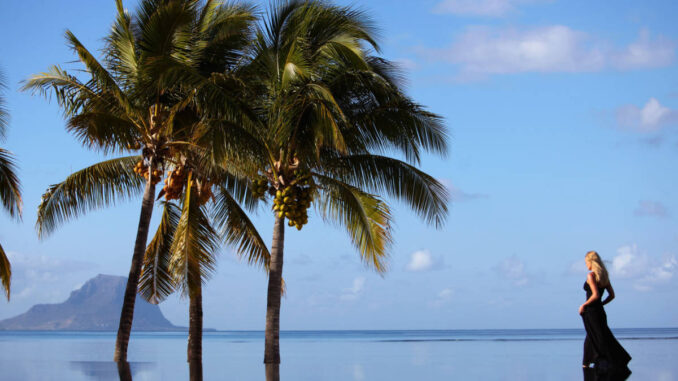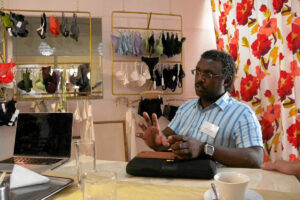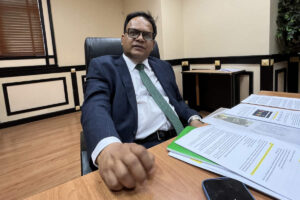
by Yvonne Heinen-Foudeh
With vertical supply structures, product variety, rapid market response, delivery reliability, flexibility in batch sizes, and pricing strategies, Mauritius has secured a solid position in the international scenario for clothing procurement. The majority of companies have been able to overcome a whole range of challenges and are in the process of transformation. FASHION TODAY has made an on-site assessment of the current situation in the clothing industry, providing a status report with an outlook towards the future.“
In terms of quantity, the tiny island state of Mauritius ranks towards the bottom in terms of manufacturing and exports (clothing exports in 2017 amounted to approximately USD 602.4 million, with the latest available Statista data showing an export revenue of USD 502.8 million in 2021, representing a 21.8% increase from the previous year). – And then came COVID-19.
Pandemic-related logistics and supply chain disruptions, order declines, exorbitant freight costs, networking issues and labor shortages have also hit the Mauritian apparel sector hard. Speaking to Textile Network, Geerish Bucktowonsing, Director of Industry of the Economic Development Board (EDB) puts the overall export decline in the Mauritian manufacturing sector at 15% year-on-year in 2022. As a result of the crisis, Hong Kong-based Esquel Group, the world’s largest full-line manufacturer of woven shirts, shut down manufacturing facilities in the PRC, Malaysia, and even the one in „Mu,“ the affectionate nickname of the people here in everyday language. This not only cost several thousand jobs, but also had a severe impact on the mood in the industry.
Crisis-proof

As a strong pillar of the Mauritian economy, the textile and especially the clothing sector has nevertheless been able to hold its own, most recently (2021) accounting for around 47.3% of total exports, thus representing the country’s largest export sector with a share of GDP of 3.5%, according to the EDB director. Whereas in our on-site research last in 2017 (see Textile Network 2-2017, page 24 ff) around 616 companies still employed around 79,500 people, today there are probably a total of around 535 companies and 35,000 employees in the manufacturing industry. Of these, around 20,000 are Mauritians and around 15,000 are foreign workers. This is because, at the latest with the end of the pandemic and thus also the reawakening of the tourism industry, the sector is finding it difficult to recruit employees in the country.
Status today
Despite all adversities, a number of partly fully integrated or pure apparel companies such as Aquarelle Clothing, Floréal Knitwear/Ciel Textil, Firemount Textiles, Tropic Knits, Real Garments or Wensum (s. company portraits below – in this issue) have succeeded in positioning themselves as an attractive sourcing niche through agile market response, quality-assuring processes, partly substantial investments in technology and above all in employee qualification. Production is generally based on full-package service for international brands, retail chains and designer labels in the USA and Europe. Among them: Armani, Benetton, Burton, Calvin Klein, Diesel, Esprit, Guess, Levi’s, Marks & Spencer, River Island, Tommy Hilfiger, Topshop and Zara.
In addition, the free trade zones (Export Processing Zones – ECB) granted to Mauritius by Unido offer significant investment incentives for investors from home and abroad.
Geography, History, Culture
Mauritius is home to about 1.4 million inhabitants on an area of 2,040 square kilometers (about half the size of Saarland). The island nation is located in the Indian Ocean, about 2,000 off the coast of the African continent. The country includes the islands of Mauritius, Rodrigues, the Agalega group of islands and the Saint Brandon archipelago.
The minimum monthly income in the state, which has a good social and health care system, has been 12,075 MUR (about 245 €) since January 1, 2023. Official language of the island nation: English. However, French is preferred by the majority. About 80% of the, people speak Morisyen, the French-based Creole as their mother tongue. The rest of the population speaks Morisyen as a second or lingua franca.
Mauritius has only been independent since 1968; it first became a monarchy with Elizabeth II as head of state within the Commonwealth and then a republic in 1992. In the economic growth of one of the poorest countries in the world from 1968, the textile – clothing sector played a decisive role as a catalyst.
After an eventful colonial history, Mauritius‘ society today is highly diversified in terms of ethnic groups and languages. The coexistence of Mauritians of Indian, African, European and Chinese descent has led to an exchange of cultures and values, a better understanding between people of different origins and a peaceful and appreciative co-existence.





